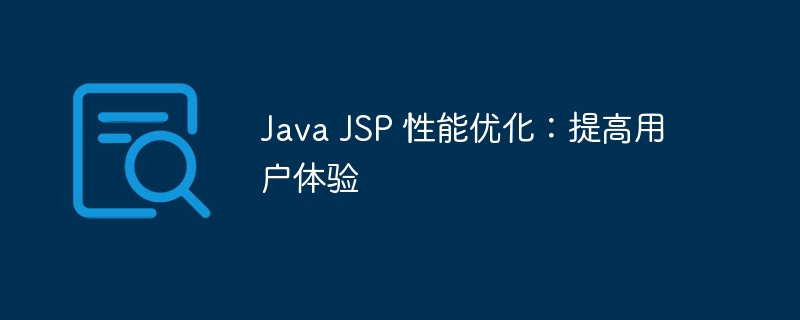
- Use index to improve query speed.
- Reduce unnecessary connections and queries.
- Consider caching query results.
-
Optimization sql Query, use valid connections and queries.
php editor Xinyi brings you important strategies on Java JSP performance optimization. In today's digital era, users have increasingly higher requirements for web page loading speed and performance, so optimizing web page performance is crucial to improving user experience. This article will introduce you to Java JSP performance optimization methods and techniques in detail to help you speed up web page loading, improve user experience, and make your website more competitive.
- Use jsP precompiled for faster loading times.
- Enable JSP caching to reduce server load.
- Avoid using unnecessary code blocks in JSP.
- Use efficient JSTL tags.
Improve static content handling
- Serve static content using Servlet filters or the Apache Http Server module.
- Use a Content Delivery Network (CDN) to accelerate the delivery of static content.
Enable browser cache to reduce duplicate requests. -
Consider using gzip compression to reduce file size. -
Optimize concurrency
Use - thread pool to manage concurrent requests.
Enable JSP synchronization to prevent - multi-threading concurrent access.
Use efficient - locking mechanism to avoid deadlock.
Other optimization tips
Use a caching system based on - Redis, such as Ehcache or Caffeine.
Enable Java - Virtual Machine (JVM) tuning, such as optimizing garbage collection and memory utilization.
Use Performance - MonitoringTools to identify bottlenecks and make improvements.
Optimize server configuration, such as enabling SSL acceleration and using an efficient - WEB server.
Consider migrating applications to the cloud platform to take advantage of its scalability and optimization capabilities. -
Implement progressive enhancement
Use progressive enhancement technology to provide different functions and experiences while keeping basic functions available to all users. -
Progressively load interactive content and media to reduce initial page load time. -
Consider using lazy loading techniques to only load content when needed. -
Develop a continuous optimization strategy
Monitor performance regularly and make necessary improvements. -
Use automatic - testing to detect performance regressions.
Adopt continuous integration and continuous delivery processes to ensure fast and reliable - Performance optimization.
By implementing these optimization tips, you can significantly improve Java JSP performance, thereby improving user experience. Users will enjoy faster page load times, smoother interactions, and more stable web applications.
The above is the detailed content of Java JSP performance optimization: improving user experience. For more information, please follow other related articles on the PHP Chinese website!






